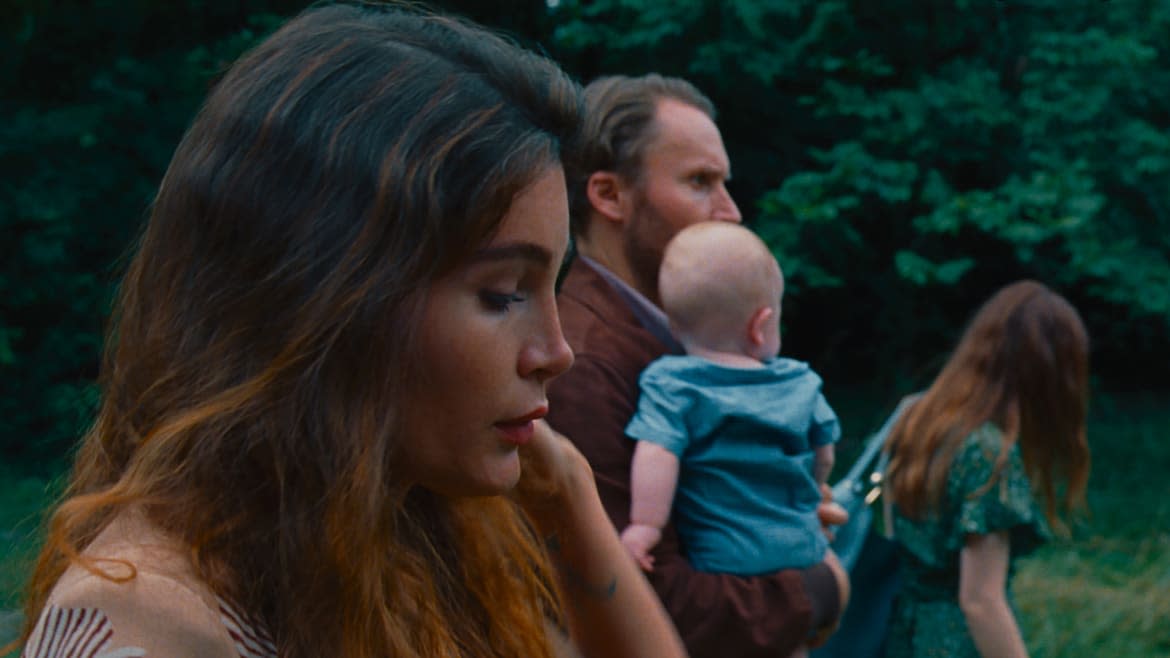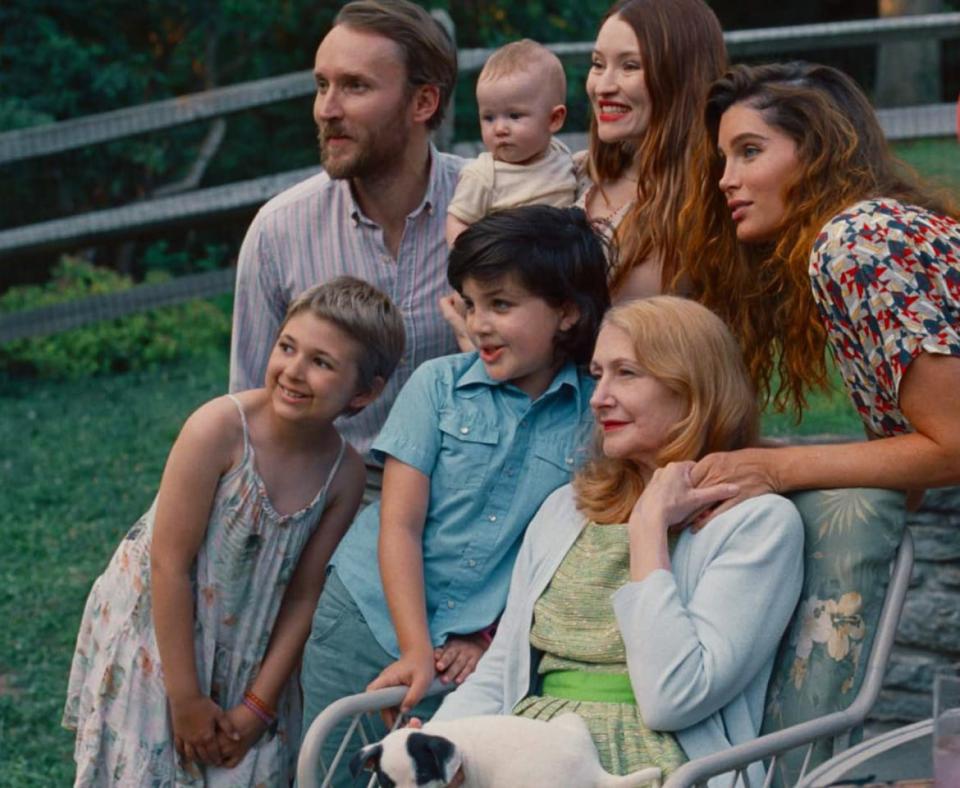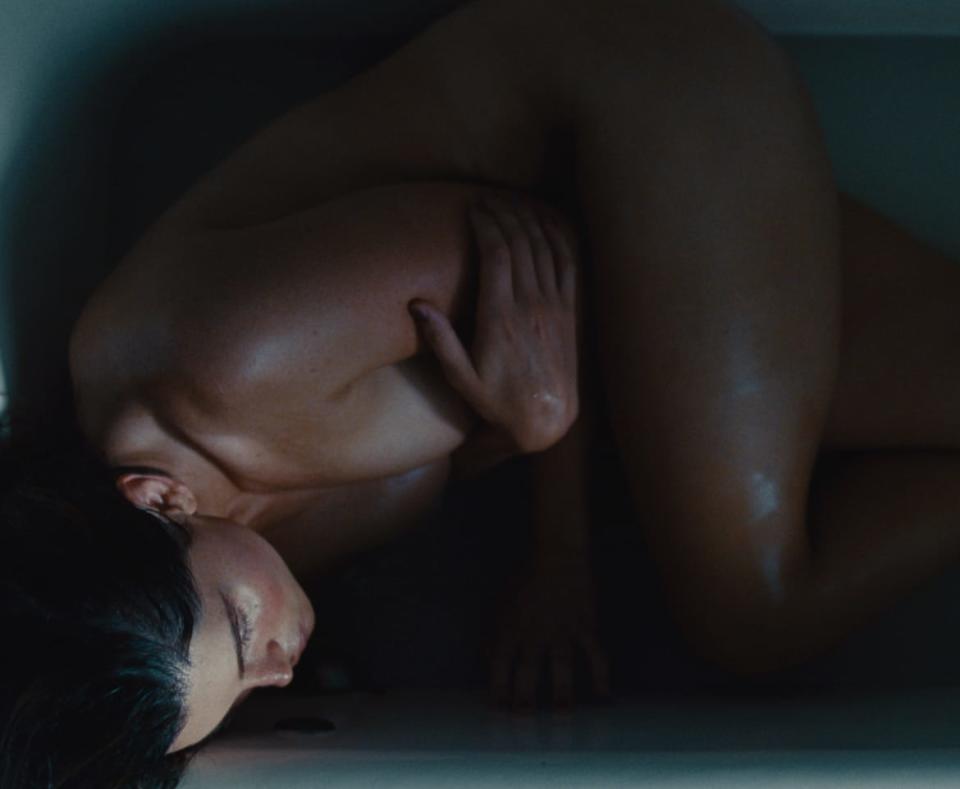Trace Lysette Ensured ‘Monica’ Was No Ordinary Trans Film

- Oops!Something went wrong.Please try again later.
- Oops!Something went wrong.Please try again later.
- Oops!Something went wrong.Please try again later.
When discussing a film like Monica—the latest movie from Italian auteur Andrea Pallaoro, starring Trace Lysette as a woman who returns home to take care of her estranged, ailing mother who no longer recognizes her—it’s difficult to decide where to start. The film is a layered and highly emotional piece of work, which unfolds with an unhurried, graceful pace. Those are wonderful aspects that memorably adorn the experience of watching Monica. But they also ensure that new questions, thoughts, and ruminations about it will continue to arise, long after the house lights have gone up.
Monica, who, like Lysette, is a trans woman, left home after her parents told her that they wanted nothing to do with her. Years later, she boldly chooses to pivot away from the life that she built for herself by returning home. The film quietly explores Monica’s decision to go home and her subsequent grappling with her own past, quite literally coming face-to-face with her trauma. But it doesn’t treat Monica’s experience like melodramatic Oscar-bait fodder. Monica is the rare film about the trans experience that’s crafted gently, intending not to exploit its enchanting star but, rather, imbue its story with her lived knowledge.
When I speak to Lysette over Zoom, prior to Monica’s theatrical release this weekend, I can feel her warmth through the screen—despite the fact that thousands of miles and millions of megapixels stand between us. Lysette is extremely soft-spoken and considers all of her words carefully, like she’s deciding which thought to pluck out from a vast array of ideas before her. When I ask her about what Monica means to her, at a moment when there is a full-on legislative assault against trans people, Lysette (who has been actively speaking out against political interference with trans folks) pauses. “I’m trying to make sense of this moment in my career, this hard-fought win in my own personal journey, that’s coinciding with this really, really crazy and dark time for trans people as a whole,” she says, after a beat. “I guess I’m just sitting with the duality of all of that.”
Below, Lysette discusses the potential impact of Monica on both her career and the lives of audiences, how she used her experience to help create a film free of triggering language, and the pure joy of just getting to see trans people living their lives (and dancing to hit viral songs from the early 2000s, naturally).
‘Monica’ Is the Most Important Film You Can See This Year
Monica is such a beautiful, unique look at the trans experience. Months after the film earned an extended standing ovation at the Venice Film Festival, the rest of the world gets to see it. How are you feeling at this moment?
I am doing my best [laughs]—to show up for myself and remember to enjoy it. I’m trying to make sense of it all and keep a level head, because nothing is promised in this industry. I just know that we made a good piece of art that I hope makes some change and opens some hearts, some minds, and some doors for trans folks. And I’m really proud, you know?

Watching the movie, it struck me that we don’t see Monica suffer on-screen in the same ways that many films’ trans characters do. We never see her deadnamed or misgendered in this movie, for example, which is such a relief. Was that something that drew you to the script when you read it?
Actually, it’s interesting you mention deadnaming, because that was a conversation on set. I had come on as an executive producer as well, so there were a lot of those conversations along the way. There actually was a deadnaming in the script at one point, but through a discussion… we ended up taking it out. And I feel like that was the right thing to do. Drew Gregory, who was the other trans person on set, I was grateful to bounce things off of her. She was the director’s assistant. And Andrea Gallaoro is such a gentle and collaborative person, who just wanted to get it right, and I think that is how we navigated a lot of the trans-specific stuff.
I appreciated how we see Monica’s pain in other quieter ways, like when she’s connecting with her family, and that the film doesn’t force her to be traumatized all over again in doing so.
Absolutely! It’s like, we get to see this fully realized, lived-in trans woman, who has been this way for a long time, just navigating life and doing normal things, like holding a baby, talking to her brother, or playing tag in the forest with her nephew. I think those moments say so much.
Because Monica relies on those intricate, intimate moments, it doesn’t have all that much dialogue. What’s it like to prepare for something like that, which requires you to emote and be present in those moments of silence?
I couldn’t phone anything in—nor did I want to. I love Monica so much. I knew what she represented not only to me but to a lot of the trans women I know. And those still moments, without dialogue, were so emotionally charged: whether I was holding back tears, or crying, or just in deep thought about whatever was going on in the [current] scene or had happened in the previous scene. There were no easy scenes for Monica, because it’s such a contentious and reflective time for her. And [it’s] a finite time for her, given that she doesn’t know how much longer she has with her mom. All of that was swirling around in her head, for the [whole movie…] Some of my favorite moments are the ones that don’t have dialogue.
Those ‘The Good Doctor’ Memes Are Funny for the Wrong Reason
I wanted to talk about the bathtub scene, with you and Patricia Clarkson, who plays Monica’s mother, Eugenia. There’s an intense, beautiful moment, where Monica and Eugenia look at each other and silently exchange something. The film never specifically tells us if Eugenia recognizes her child here, and we get to consider what that means for both characters. What was it like to film that scene?
Well, it was challenging. I remember kneeling on the floor in the bathroom and, uh—[laughs]—my knee, I was having issues with my knee on the hard tile floor! And so—

I have bad knees too, so I can really relate to that!
[Laughs] I was like, can I get a stool or something?! I have to crouch on the hard floor. But no, emotionally, I knew that was going to be a really charged scene for Eugenia and also Monica, but that it was coming with different baggage for Monica than it was for Eugenia. I hope it translates. I feel like it does.
When I watch it back, I can see the conversation between their eyes. I knew that Monica’s walls were falling away in that scene, and also how tired she was in that scene, and how much of an epiphany—maybe that’s the wrong word—but there’s a revelation happening for Eugenia. And for Monica, it’s heavy in different ways. I’m glad it didn’t come across as cliché. I really liked how it played out.
I don’t think it comes off as false, either. There’s still so much left unsaid, but that’s where the scene’s power lies. There’s also a fabulous scene in which Monica is getting ready to go out to the bar, and she’s dancing to the viral Romanian hit “Dragostea Din Tei.” It’s such a fun, abrupt throwback, and it somehow felt so right for this character. Was that song written into the script? Was it chosen on the day? Did you already know it? I have to know everything.
[Laughs] It was definitely written into the script. I believe Orlando Tirado chose that one—he’s the co-writer with Andrea. I actually wasn’t familiar with it, so I had it on a Monica playlist on my phone for a couple of months, before we shot. Because I just needed to know the song, obviously.
It was a fun scene to shoot, because I got to get in my body and just dance and be free, and I think that’s something a lot of us do before we hit the town! Whether it’s Tina Turner, or “Dragostea Din Tei,” or Lil’ Kim, or Stevie Nicks—good music is good music, and sometimes you’ve gotta throw it on before you let loose.
Since the film’s premiere at last year’s Venice Film Festival, we’ve seen so many very dark, dour things happen, politically and socially, all over the country and in the world. We’ve got lawmakers stripping gender-affirming care from kids and teenagers. There are drag bans and full-on assaults on the rights of trans and queer people nationwide. To have this film debuting right now feels like the hope that many people need, because it’s such a hopeful film. I really wonder what it means to you that this film is hitting theaters right now.
It’s a lot to think about, honestly. I’m trying to make sense of this moment in my career, this hard-fought win in my own personal journey, that’s coinciding with this really, really crazy and dark time for trans people as a whole, as we are trying to navigate all this legislation and hate that’s coming our way. I guess I’m just sitting with the duality of all of that, and I do hope that this film reaches people. And because it is so delicate, maybe it reaches more people than it would have if it was not as delicate, or if it were more preachy or delivered in a different way.
I think that’s a beautiful way to look at it. I hate to make you the head of an entire movement. I just think it’s so important that this movie’s coming at a moment like now.
Yeah. That means the world to me. I just hope it gets the legs that it needs to reach people.
Get the Daily Beast's biggest scoops and scandals delivered right to your inbox. Sign up now.
Stay informed and gain unlimited access to the Daily Beast's unmatched reporting. Subscribe now.

